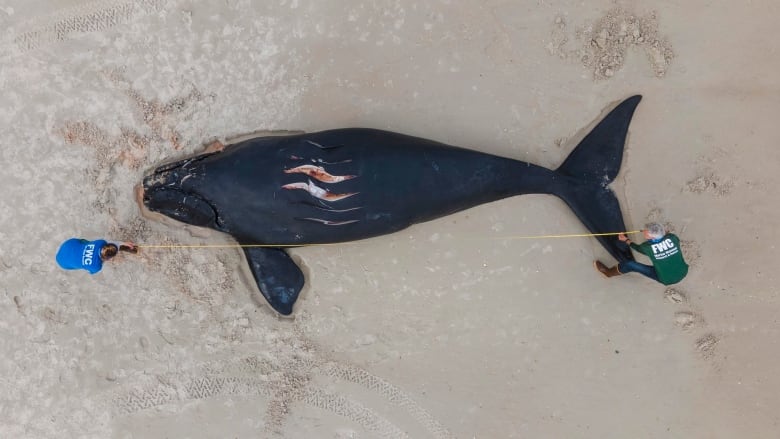New data from stranded whales is yielding better estimates of body sizes needed to determine drug dosages, as well as assess the health and food requirements of whales
Have you ever looked at the side of a bottle of medication and seen the chart saying how much medication to take for your age and weight? This piece of information is something we have probably all seen without recognizing there was a team of dedicated doctors behind the scenes who determined what is the appropriate amount to take. The doctors determined this by knowing how much the average person weighs throughout their life. This is exactly what Dr. Sarah Fortune and her team looked at in their research on the North Atlantic right whales.
Unlike the 7.8 billion humans (and counting), there are only about 500 North Atlantic right whales. This small number combined with the need for ethical research conditions, makes it difficult to create a body-size growth chart for right whales like the one used for human medications. And while you may not think that right whales need medication, there are plenty of other reasons to know how much different aged whales weigh.

The calf had injuries matching those typically sustained by a strike from a vessel, including propeller wounds. (photo: Florida Fish and Wildlife Conservation Commission’s Fish and Wildlife Research Institute)
Dr. Fortune and her team added recent measurements from right whale carcasses to a historic data set to revise existing predicted mean weights and lengths of right whales from birth to sexual maturity. Their study, published in Marine Mammal Science, allows scientists to better know how big and heavy a normal right whale should be—and provides a means to assess the nutritional status of North Atlantic right whales. Not only that, but this information also allows for correct drug dosages to be calculated to treat wounded and entangled individuals. Research like that this highlights the importance of updating models as new and better data become available.
For generations, scientists have been collecting data, providing some results, and moving on to new projects. But what happens to all that data? Thankfully scientists are data hoarders, and can re-use data for future research—whether it is to improve estimates of body size of whales, or further the conservation of other species (as students at MMRU are doing to determine how pinnipeds navigate). Revisiting data with fresh sets of eyes is one way that science continues to evolve.
You can learn more about Dr. Fortune’s research from our publication page, and look for the article titled Body Growth of North Atlantic right whales. Feel free to check out our social media pages as well and keep a watchful eye on this space as more discoveries are made by our team.
Dr Sarah Fortune is a former Post-Doctoral Fellow at the Marine Mammal Research Unit at the University of British Columbia
 Publication
Publication
2021 | ||||||||||||||
|

|

|
||||||||||||
